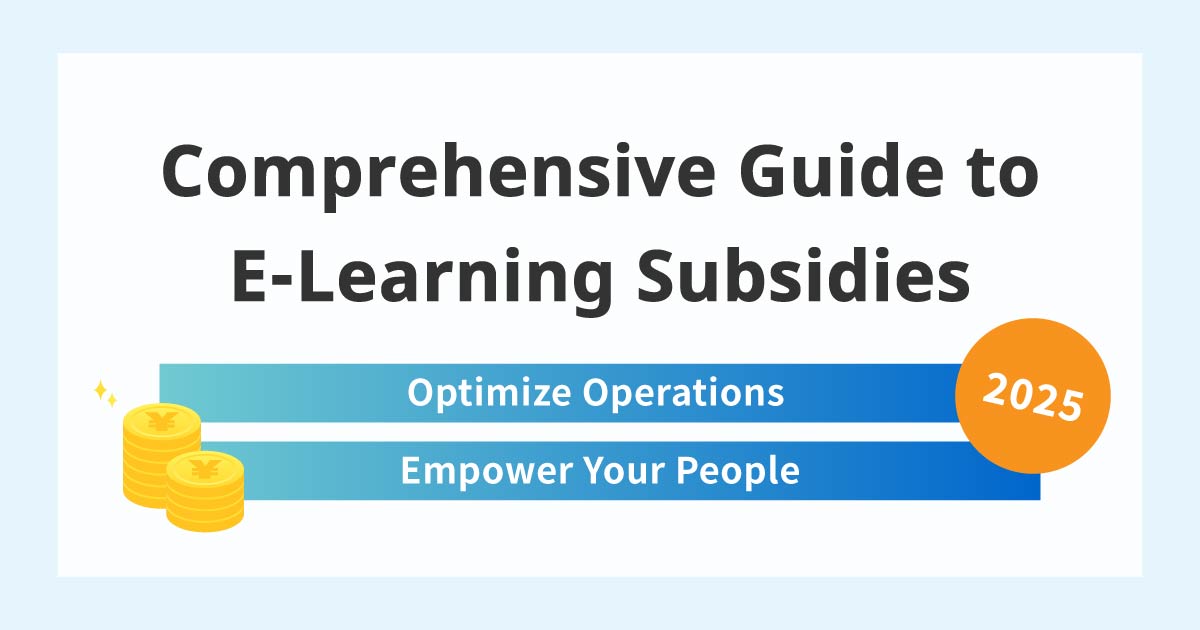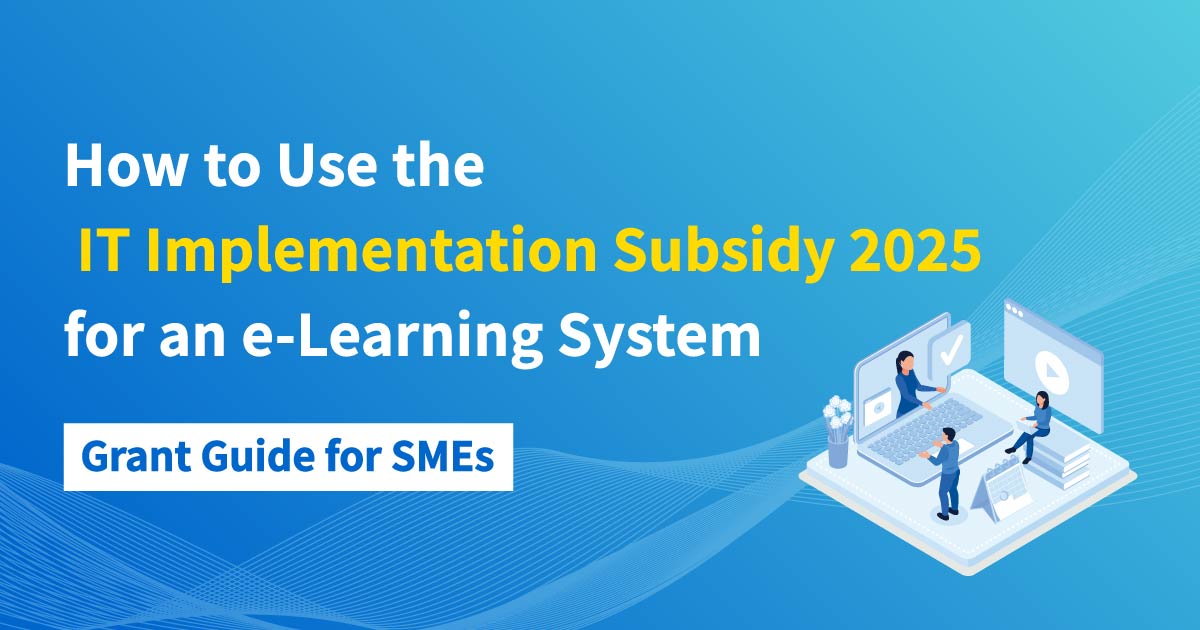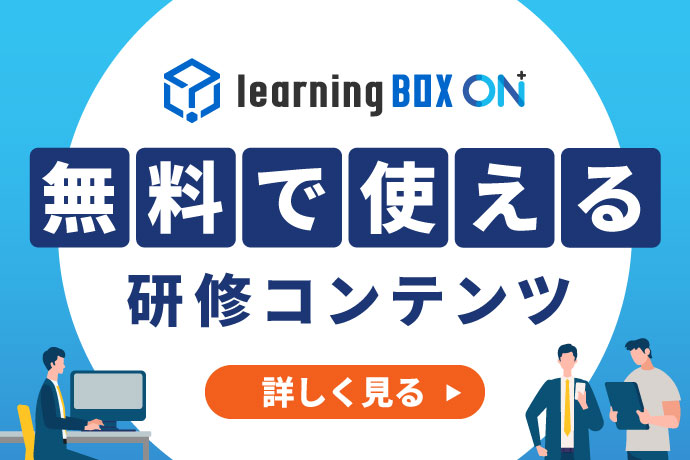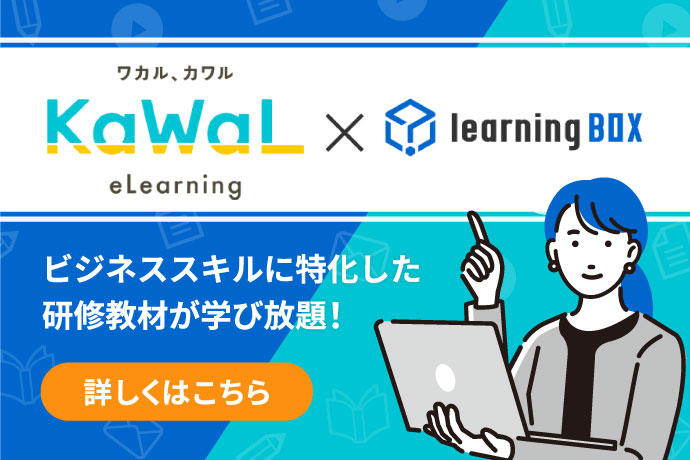Strategies to Reduce HR Costs While Retaining the Human Capital Quality

Employee training plays an important role in shaping a company's growth but the training cost may be a bottleneck besides the efforts to train employees.
This article includes an overview of the costs and concepts of human resource development, as well as key points for reducing costs without compromising the quality of the training. We will also introduce recommended systems that can cut labor and costs for training management and human resource development.
Contents
Estimated HR development costs

According to the “2017 Training Industry Report” by Training magazine, it is said that companies spent $1,075 per learner on average. A simple calculation shows that a company with 100 employees spends approximately $0.11 million per year on education and training.
From this result, it is understandable that many companies spend much on human resource development. This may be because of the following reason: “Human capital is positively correlated to economic growth since investment tends to boost productivity,” Investopedia said.
However, many companies are taking into consideration reducing their budgets for education and training expenses due to the impact of an unprecedented economic crisis including COVID-19. According to a FY2020 survey by the AIST, education and training expenses decreased. Although this may possibly be a temporary effect of the spread of infection, many companies are still affected, and an increase in these expenditures will not be expected.
Back to ContentsShould companies reduce the cost of HR development?

Although higher cost for employee training does not always lead to better results, it will be meaningless if the quality of a training program goes down and you cannot maintain the essential human capital. Cost and quality are not a trade-off in training. Your ingenuity will prevent unnecessary spending.
Human resources are one of the "four major management resources" indispensable for corporate management. The components of them are as follows: financial resources, physical resources and information resources besides human resources. They always work together and cannot be lacking in any of them for sustainability management.
However, as more companies focus on human resource development each year, statistics from Pew Research Center indicate that the number of employees changing jobs is on a gradual upward trend. From these results, it can be inferred that your effort may be possibly in vain regardless of the investment when workers leave a job.
Needless to say, managing training budget is an important factor to maintain the employee retention.
Back to ContentsCost-reduction or not?

No matter how essential HR development is for a company's growth, many of you may look for a strategy to reduce the cost. One of the methods is to divide into two categories: those that CAN be reduced and those that SHOULD NOT be reduced.
To discern these two, focus on whether it will lead to a reduction in the quality of training.
Cost-saving approaches
Costs for items not related to the quality of the training, such as transportation, lodging, and venue costs, can be reduced with ingenuity. For example, in the case of a training program that requires overnight stay, the overall cost can be reduced by using a hotel that specializes in training, as it often includes accommodation, venue rental, catering, and meals.
Other ways include using a rental conference room as a venue as close to the workplace as possible, utilizing e-learning, and conducting online training course.
These items as written above do not directly relate to the training quality, that is, they are expenses you can lower. On the other hand, it should be avoidable to force a burden on employees such as taking buses instead of express trains for reduction of the transportation costs. Such measures may affect employees' performance and can be a trigger to lose sight of fundamental objectives in the end.
What you should invest
Appropriate training will have a plethora of benefits. In terms of the right investment, it is indispensable to ascertain the bottom line. When outsourced training for lectures is one of your choices, it will be a good example to think about here.
What you need to take into consideration is whether compromising on the training budget is in line with your purpose or not. Regardless of the price, it is worth investing in if the content is the right fit for your needs and relates to increasing employee commitment and engagement.
How about system or equipment costs? Are they related to less effort and saving time? Even if they cost more in the immediate future, such investment can be connected to the factors of employee engagement and less labor costs later on. Therefore, it is recommended that these kinds of cost reductions should be avoided.
Back to ContentsHow to improve cost management

It is never the case that the more you spend, the better the quality of your training. There are tips to improve the quality of training with cost-saving approaches.
In order to cut only the cost and effort of training while maintaining the quality of training, clarify the purpose and consider the total cost of the entire program.
Let’s think about outsourced training. Although it seems to cost more in the immediate future, such strategy will result in less costs and labor in the long run in terms of cost-effectiveness.
Read each feature mentioned in details below.
Outsource trainings
The biggest advantage of this method is to dramatically reduce the effort required for training preparation and the burden of instructors.
Outsourcing companies are specialized in HR development, and they have “know-how” that is not available in-house.
Instead of the wide range of their services, especially in the case of large HR development companies, their services may sometimes be a risk of misalignment depending on the content of the training program.
In this respect, freelance instructors may be able to create training content tailored to your company's needs, so it is important to choose a training company with a clear understanding of each company's services, regardless of the size of your company.
Evaluate training
How do you ensure that the training content is applied efficiently and practically? The key is to evaluate training content after the implementation. What is the ad hoc to achieve goals? How much has the training played an important role for them? Not only in training, but in personnel evaluation take advantage of this element. If you are an HR professional, you can gather data through an evaluation sheet asking “how well the training content is utilized in the field.”
Employee awards and incentives based on the achievement rate of the evaluation would motivate employees to participate in training, which could have the benefit of reducing the resignation rate as a result. After all, these attempts play an important role for cost-saving and high performing human capital.
Utilize IT systems
What we recommend the most here is to utilize IT systems. If face-to-face training is your traditional way, it will be a significant change in terms of cost management. For example, online courses make it possible to reduce the transportation, lodging, and venue costs.
Implementing the system will enhance employees knowledge and skills as well. They can optimize their learning opportunities in their spare time as long as they have an internet connection.
In addition, once the training content has been filmed and edited, you can take it over the next year onward. As a result, they can reduce burden on training in developing training content and courses. Moreover, it is possible to customize and keep improving content depending on your strategies.
Back to ContentsCase studies

Methods for reducing HR development costs vary depending on the type of company. By clarifying your company's challenges and objectives, you will be able to cut costs without compromising the quality of the training itself.
Below are two examples of companies that have successfully reduced costs.
Convenience store chain
Previously, they had to gather employees from each store for each training session, which required time and effort to coordinate their schedule.
Besides, the cost of venue, transportation, and lodging were significant challenges. Introducing online training as a solution resulted in a two-thirds reduction in the frequency of group training sessions and the cost accompanied with them.
Talking about the enhancement of employee knowledge and skills, e-learning makes it possible to provide training tailored to the attributes of each employee, analyzing each employee's training progress and test results.
Tutoring school
Training time is essential for tutoring schools due to the nature of their business. However, since most of the instructors are university or graduate students, initial training time of 10 hours or more was a significant burden on both the instructors and students.
By introducing an e-learning system, the number of group training sessions was decreased, succeeding in a 25% cut in training costs. The strategy led to a great effect on time-saving along with cost-saving. As a result, they came to focus on other tasks contributing to work efficiency.
E-learning allows users to learn at any time and place, and can be tailored to their convenience and level of understanding. Effective time management will work for in-depth understanding and skills.
Back to ContentsRecommended tool to reduce cost and effort for HR development
Our e-learning system, learningBOX, is a great LMS (Learning Management System) covering all the functions necessary for HR development. Not only creating content, but managing users and scores are available as default. You can assign your content to a specific user or group, and each answer result is automatically scored.
Once e-learning materials are created and shared, you can use them as much as you need, which helps you reduce the amount of time and effort required for training preparation. Instead of these elements spent conventionally, you can focus on other tasks. Also, there is no need to print materials nor searching venues for training. This is apparently a huge difference from traditional training. It can be said the same as the costs of transportation and accommodations as well. Thus, elearning enables you to save not only costs but time and efforts for training.
Try our Free Plan. You can register up to 10 accounts without a trial period.
Paid Plansis also available. The content developed with the Free Plan will be inherited if you upgrade. Feel free to contact us if you have any questions.
▼You may also like:
Back to Contents


-
Discover rich featuresService Guide
-
Feel free to contact usGet in Touch
-
Try our Free PlanTry Free Plan










